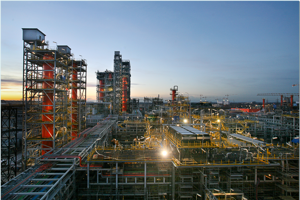Online Exclusive: Sunset Boulevard for delayed coking?
Giacomo Rispoli, Executive Vice President, Eni SpA
The following is an overview of Giacomo Rispoli’s presentation “Eni slurry technology: Achieving the goal of residue conversion.” Mr. Rispoli, Executive Vice President of Eni, presented this material at Hydrocarbon Processing’s International Refining and Petrochemical Conference (IRPC), which was held in Vienna, Austria, from June 6-8, 2017.
In 2008, the International Maritime Organization (IMO) adopted a resolution to amend Annex VI of the MARPOL Convention that came into force on July 1, 2010. Annex VI introduces more stringent limits on sulfur content in marine fuels. The new regulation, which came into effect January 1, 2015, caps sulfur content in marine fuel at 0.1% in sulfur emission control areas (SECAs). The IMO’s sulfur cap regulation calls for a reduction of the sulfur content in marine fuels outside of SECAs from 3.5% to 0.5%. The new rule will go into effect in January 2020, and affects more than 50,000 ships worldwide. The decision is a milestone in reducing sulfur content in marine fuels. Just as many nations have invested in upgrading their facilities to produce low- and ultra-low-sulfur (ULS) gasoline and diesel, bunker fuel has come to the forefront on the refining industry as the next fuel to significantly reduce planetary sulfur dioxide (SO2) emissions.
According to a study by CE Delft, global marine fuel demand is expected to reach 320 MMtpy in 2020. The shift to low-sulfur marine bunker fuel will result in a demand of approximately 230 MMMtpy of fuel oil with a sulfur content of 0.5 wt% or less. The use of high-sulfur fuel oil (HSFO) will continue for ships equipped with scrubbers; the demand for LNG as a marine fuel will be limited.
The use of 0.5% sulfur marine fuel has some advantages over the other two alternatives: it does not require any major investment in equipment and/or specialized personnel to the ship owners, and engine maintenance is the same or even better.
The supply of low-sulfur bunker fuels is the most important challenge for the refining industry. Refiners have two pathways to comply with the new rules:
- Make no investments, but process ULS crude (e.g., African crudes such as Djeno Melange, Sarir, Westerm Desert, Asian crudes and/or North Sea crudes)
- Make investments in conversion plants for the upgrading of the bottom of the barrel.
The first option will provoke stress on sweet crude quotation, and lead to an increase in the price differential between sweet and sour crudes in the medium and long-term. This pathway would allow deep conversion refineries, which process heavy and medium-sour crudes, to have record margins, while simple refineries will be at a disadvantage.
There are several commercial technologies available for the conversion of vacuum residue to lighter products with a higher H/C ratio:
- C-rejection processes (thermal) such as delayed coking
- H-addition processes (catalytic) with fixed- and ebullating-bed alternatives.
While delayed coking has high-feedstock flexibility but poorer quality of distillates and high coke yields with a dramatic environmental impact and possible disposal costs (climate change issues), the catalytic technologies provide higher distillate qualities, but limited feedstock flexibility, all the while still producing fuel oil.
An ideal technology for the conversion of the bottom-of-the-barrel, would have a high distillate yield, full conversion and high-feedstock flexibility. The Eni Slurry Technology (EST) brings together all of these characteristics. EST is an innovative hydrocracking process based on two unique features:
- A nano-dispersed (slurry), non-ageing catalyst and a
- A homogeneous isothermal slurry bubble column reactor.
Both features allow for the total conversion of the bottom-of-the-barrel into high-quality middle distillates, with feedstock conversion exceeding 95%. The treatment of the purge with a static decanter can further increase conversion of 1%–2%.
Research activities on EST began in the early 1990s. This activity was followed by the construction of a pilot plant in 1999, a commercial demonstration plant in 2005, and the first EST industrial plant in Sannazzaro in 2013. The Sannazzaro plant was in operation for more than three years at full capacity, allowing Eni to gather real data and operational experience.
The EST industrial unit can process a wide-range of residual and produce a slate of products composed of light- and medium-distillates, as well as marine bunker fuels that meet the IMO’s 2020 specifications. The EST process does not produce fuel oil. The reduced amount of purge can be easily disposed to cement and steelwork factories, sent to the gasification plant or used for metals recovery.
The IMO 2020 Sulfur Cap regulation provides a great opportunity to refineries that adopt bottom-of-the-barrel conversion technologies, such as EST.
The most likely market scenario of the IMO decision is an increase in the sweet/sour crude oil differential in the medium- and long-term, an upward stress on distillates-HSFO spreads and the collapse of HSFO demand. Considering that only about 25% of ships will be equipped with scrubbers, very high spreads between distillates and HSFO will last for a significant amount of years. This scenario is an ideal situation for refiners operating highly-complex refineries. Their ability to process sour crudes will enable their facilities to squeeze exceptional margins from the barrel.
Delayed coking and fixed- and ebullated-bed technologies are not ideal for this future scenario. These technologies have important drawbacks. Coking technology conflicts with the large surplus of coke in the market and with the de-carbonization policies already adopted and anticipated, while existing and conventional hydrogenating technologies will produce significant quantities of fuel oil that will not meet new marine fuel standards.
The introduction of an EST plant in a refinery would greatly enhance economics. Based on 2017 simulations, an EST plant provides margins that are 30% higher when compared to ebullated-bed technologies, and 40% higher when compared to a delayed coking unit. In a 2020 and beyond scenario, the relative contribution margin would widen in favor of EST technology. For example, in the future scenario, the net margin of the EST plant would exceed $37/bbl compared to a sour hydrocracker that would only provide a net margin of $10/bbl.
The underlying idea is that a complex refinery with an EST plant will allow the facility to convert refinery residues, heavy oil and bitumen into high-quality products, all the while eliminating the production of residues.
The substitution of delayed coking with EST technology has already begun. In mid-2017, Eni signed a license agreement with a Chinese oil company to replace a coking unit with an EST unit.








Comments